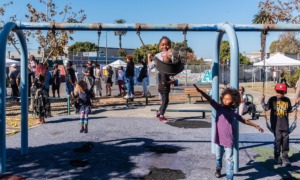Author(s): Juvenile Law Center
Nolan Anderson
Randy Kreider
Kristen Schnell
Published: February 4, 2021
Report Intro/Brief:
“Youth and their families across the country often face consequences in municipal courts similar to those they would face in the justice system, but without the same procedural protections. Significant attention—from the public, the media, and academia— focuses on federal and state criminal and juvenile courts. Much less attention is paid to municipal courts, present in cities and towns in over half of U.S. states. These courts typically have jurisdiction over local ordinances, including those that commonly affect youth, like age-specific curfew ordinances, loitering ordinances, and ordinances proscribing possession or consumption of alcohol and tobacco by minors. The lack of attention to municipal courts creates real risks for affected youth and their families. In Casper, Wyoming, for example, it took years to discover that the city’s municipal court had been illegally sentencing youth convicted of possessing alcohol to six months of probation (in addition to a fine of up to $750), even though local ordinances limited sentencing to a fine only. This issue is also vital to addressing racial disparities in the justice system. Black, Latinx, and Indigenous youth are often policed, ticketed and fined for minor misbehavior like curfew violations and loitering at rates much higher than white youth.
Columbia Law School’s Community Advocacy Lab, in collaboration with Juvenile Law Center, examined the constitutions and laws of each of the fifty states plus the District of Columbia to better understand municipal courts, and specifically how they affect youth. We first looked at the states’ constitutions to assess how municipal courts are authorized. We then reviewed state codes to understand municipal court jurisdiction. We also examined many of the statutes and ordinances that have the greatest impact on youth in municipal court, like curfew and minor-in-possession laws. Finally, we considered the consequences youth and their families face for failure to pay.
Our research reveals three key insights: First, the legal framework creates significant opportunities for state, as well as local, advocacy for reform. State legislative advocacy will be particularly important in states that mandate municipal courts. In states that provide municipalities more discretion, advocacy can also be directed at local executives. Second, municipal courts expose youth to significant harm without providing them with adequate procedural protections. And finally, while further research is needed, programs that divert youth from municipal court and provide developmentally appropriate responses to youth could provide effective alternatives.
Part I of this report examines the constitutional and statutory sources of municipal court authority. Part II reviews municipal court jurisdiction, particularly with respect to conduct by youth. Part III discusses the fines and fees that youth and their families commonly face in municipal courts and examines how failure to pay these fines and fees can result in harsh penalties including incarceration and driver’s license suspensions. Part IV recommends opportunities for ongoing research and reform.”
>>> CLICK HERE to see all of Youth Today’s REPORT LIBRARY































